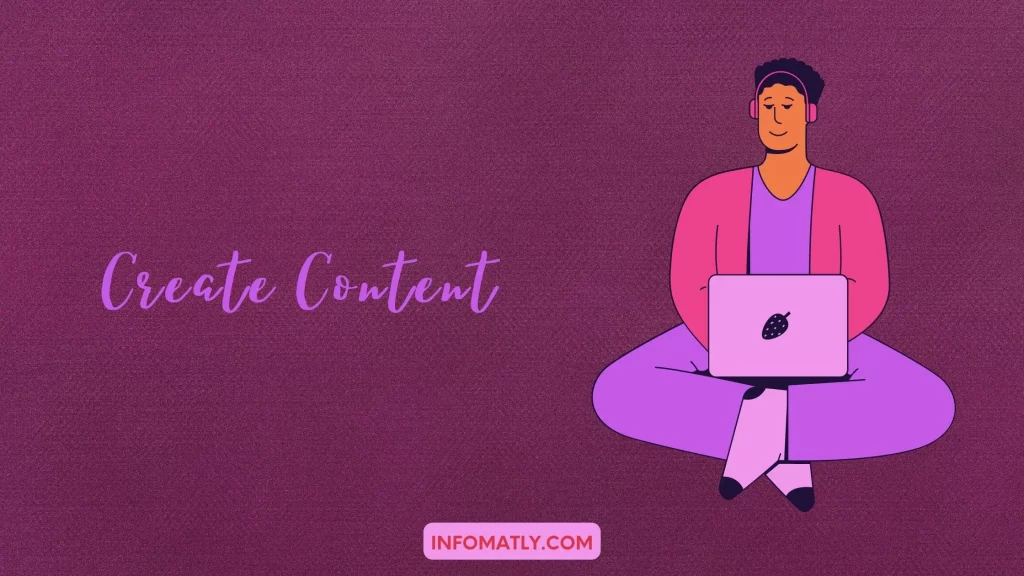The Internet is saturated with content, and many bloggers are on the Internet. However, following sound advice is a great idea if you want your blog to succeed. It is not necessary to set specific goals when you first start. The goal is to post interesting and informative content consistently.
Several methods exist for achieving this goal. Some essential blogging guidelines can be helpful for the majority of blogs. These are essentially the fundamentals and methods that help bloggers speed up the initial phases of their blog’s growth. Here are some tips by Infomatly on how to improve your blogging.
The 10 best blogging tips for beginners
- Start with Niche Research
- Planning for EveryThing
- Identify your competitors
- Keyword Research
- Create Content
- Focus on Search Intent
- Do basic SEO of the Blog
- Design Visuals to Engage
- Internal Linking
- Consistent Writing
1. Start with Niche Research
It’s crucial to choose a niche for your blog that you’re passionate about. If you’re an expert in a particular place, you’ll be able to find a niche in which you’re most comfortable. As a result, you’ll have an audience and be able to sell more products if you have a great idea.
For example, you can write about your passions. If you’re interested in sports, you can make a post about it. Once you gain some traction on your blog, you can expand your cover topics.

2. Planning for Everything
The second of the top Blogging tips for Bloggers is to create a plan. It is essential because the more time you invest in your blog, the more content you post. It’s also crucial to know your audience and that your niche is an excellent place to post about your topic. It will help you stay focused in your endeavors. So, start making your plan today, and don’t be afraid to take action. You can’t be successful in the long run without taking some action.
3. Identify your competitors
Begin by identifying the people who are your closest and most successful competitors first. Once you have determined their URLs, you can use them as you require.
Wouldn’t it be amazing to know which of your competition’s articles receive the most attention to try to reproduce the success of their competitors? Once you have a good idea of your competition and what they’re doing, you can follow the same path they’re doing, but improve it!
From this point, it’s simple to determine which phrases they’re trying to get to the top of the list by reviewing their URL and their headline.

4. Keyword Research
There are many things to consider when starting a blog. For example, you need to research keywords and use them wisely. In this case, keywords are the main focus of your blog. The more popular your keyword is, the more likely you will rank for it in search results.
Choosing a niche will help you find the right keywords. It’s important to avoid jargon. It would be best if you used only relevant words, and make sure to avoid using acronyms. The keywords should be short and precise. A blog can be divided into many sections. The topics can be about any subject, and they can have many sub-sections.
5. Create Content
While you need articles to get your blog off the ground, you should improve your writing skills. This way, you can gain a reputation as an expert on your topic.
- Ensure that your content is worthy of a mention. It is a much simpler idea to implement.
- Make it unique
- Break up long content into paragraphs
- Optimized the content using heading structure
- Use Proper Formatting

6. Focus on Search Intent
Google is determined to provide clients with results relevant to their search queries. If you wish to be ranked highly in Google and get massive organic traffic, your website must rank as the top search result for the search query.
The majority of readers who read your blog won’t go through the entire article. If you are looking to keep them engaged, you must entice readers to continue reading in a way that’s easy to read. The more user-friendly your writing style is, the more people will appreciate reading it.
7. Do Basic SEO of the Blog
SEO encompasses all aspects of structuring and writing the content you publish on your website. Content SEO is essential. Just like the other visitors, Google reads and scans your website texts.
The algorithm of Google determines your site’s ranking primarily based on the content you post. We all know that content is the most important thing.
- Place the target keywords in title, meta description, and heading tags, particularly in h1.
- Use precise and short URLs that describe your blog.
- Ensure your meta description has the right length and best describes your blog.
Must improve SEO content, pay attention to the appropriate keywords, and then structure your website so that Google can understand it. It’s an enormous amount of work, but it’s worth it in the end.
8. Design Visuals to Engage
When adding images and pictures, be sure to select them only from high-quality stock sites that permit you to use the photos with any copyright issues.
Finding relevant photos and including them in your blog post makes your blog appear attractive and attractive.
The reader can get an idea of your information by simply looking at the images. If you’re not taking note of it, you’re in the right place to begin.

9. Internal Linking
Internal links are links that connect two pages of one website. They transmit PageRank (or the SEO score) and provide contextual information through anchor text and other content.
There are four areas to be focusing your efforts in internal promotion:
- The homepage
- Related pages on products
- Subscriber page
- Content downloads
You could include a blog post on your home page, complete with the call to action, but at a minimum, you must link readers to your blog using the menu on top.
You may think that customers are knowledgeable about your products and don’t have to go back to your blog to find out more on your product pages. There may be opportunities to hyperlink to blog posts or specific blog sections from particular pages on your product.
Create a landing page for your blog’s readers. It is an excellent opportunity to promote any promotions for marketing you may be currently running and connect to blog posts you have written.
Also, make use of blog content towards the end of the download. The reader fills out an online form and downloads content. Use the download page to encourage sharing on social media and advertise other content that readers might discover helpful.
10. Consistent Writing
After deciding to start a blog, you need to determine how you’ll approach it. Several bloggers dedicate one day a month to writing and scheduling posts for the week. It will help them stay focused and avoid the “analysis paralysis” that can bog them down.
Many bloggers dedicate one day a month to writing and schedule the rest of their posts to be published throughout several weeks. Similarly, many bloggers will schedule their posts for a week or two.
Conclusion
Creating a blog requires time, determination, patience, and a long-term plan. These blogging tips will show you how to build a blog. Blogging is still evolving as a business. It is the reason why you need to be up-to-date with the most recent developments in the field of digital publishing.
